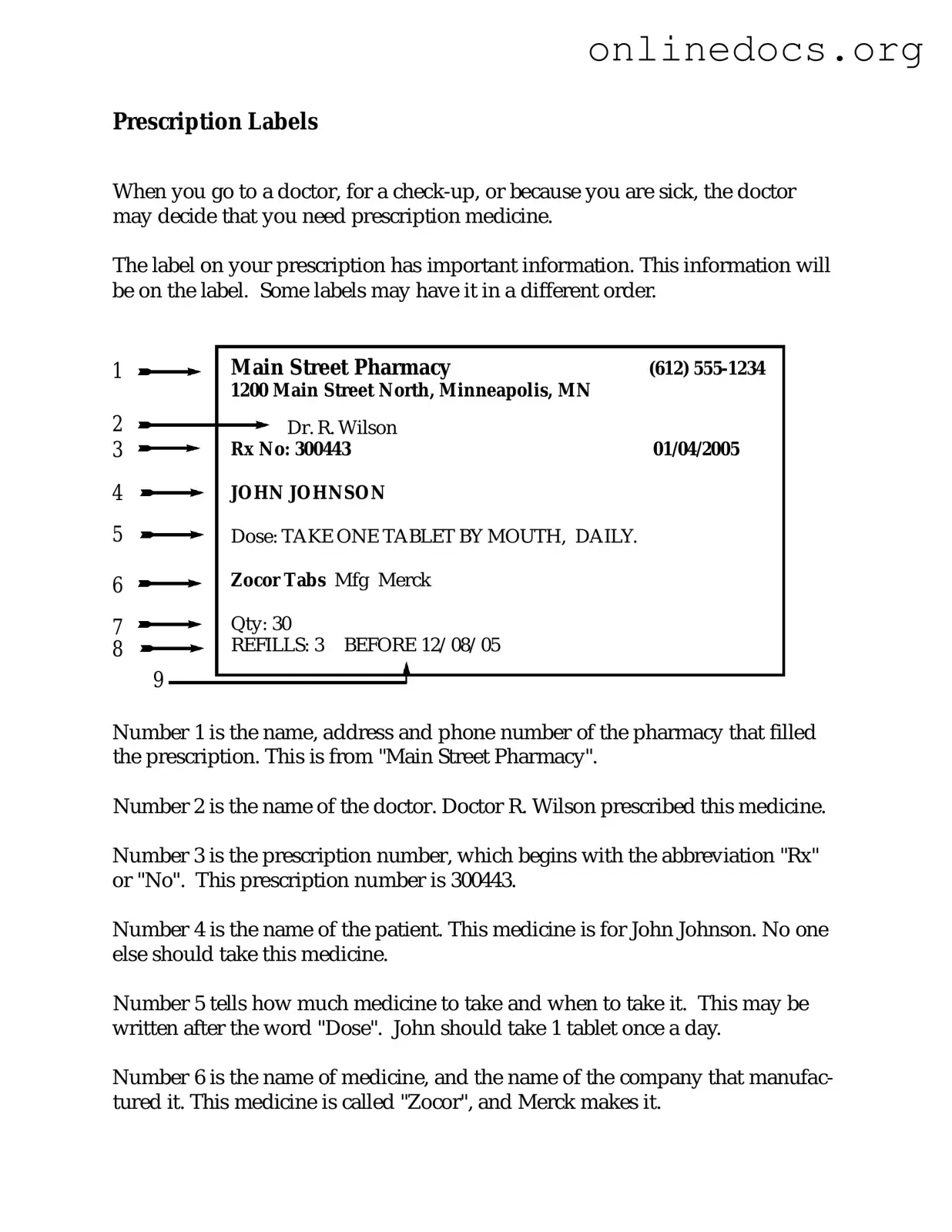The Medication Administration Record (MAR) is similar to the Prescription Label form in that it provides detailed information about the medications a patient is taking. Both documents include the name of the medication, dosage instructions, and the patient's name. The MAR is often used in healthcare settings to track when medications are administered, ensuring that patients receive their medications on time and in the correct amounts.
When transferring ownership of a motorcycle in California, it's essential to complete a https://californiapdfforms.com/motorcycle-bill-of-sale-form/, which serves as a crucial record of the transaction. This document captures vital information about both the buyer and seller, along with details of the motorcycle being sold and the agreed sale price. Using this form ensures legal compliance and a smooth transition of ownership, facilitating proper registration with the Department of Motor Vehicles.
The Medication Guide serves a similar purpose to the Prescription Label form by offering essential information about a specific medication. It includes details such as side effects, warnings, and instructions for use. Like the Prescription Label, the Medication Guide is designed to inform patients about their medications, helping them understand how to take them safely and effectively.
Patient Information Leaflets (PILs) are also comparable to the Prescription Label form. These leaflets provide comprehensive information about a medication, including its purpose, how to take it, and potential side effects. Both documents aim to educate patients, ensuring they have the knowledge needed to manage their health effectively.
The Drug Interaction Chart is another document that shares similarities with the Prescription Label form. It outlines potential interactions between different medications, helping healthcare providers and patients avoid harmful combinations. While the Prescription Label focuses on a specific medication, the Drug Interaction Chart provides a broader view of how various drugs may affect one another.
The Controlled Substance Prescription form is closely related to the Prescription Label form as it is used for medications that have a high potential for abuse. Both documents must include patient information, medication details, and prescribing physician information. The Controlled Substance Prescription form is essential for tracking and regulating the use of these medications to prevent misuse.
The Medication Reconciliation Form is similar to the Prescription Label form in that it helps ensure that a patient's medication list is accurate and up-to-date. This form is often used during transitions of care, such as when a patient is admitted to or discharged from a hospital. Both documents play a crucial role in preventing medication errors and ensuring patient safety.
The Pharmacy Dispensing Label is another document akin to the Prescription Label form. It is placed on medication containers and provides essential information about the medication, including the patient's name, dosage, and instructions for use. Both labels serve as a quick reference for patients and healthcare providers, ensuring that medications are taken correctly.
The Clinical Trial Consent Form shares similarities with the Prescription Label form in that it provides critical information to participants about a medication being tested. While the Prescription Label focuses on medications already approved for use, the Clinical Trial Consent Form informs patients about the potential risks and benefits of participating in a trial, ensuring they can make informed decisions about their health.
Finally, the Over-the-Counter (OTC) Medication Label is comparable to the Prescription Label form. Both documents provide essential information about medications, including usage instructions, warnings, and active ingredients. While the Prescription Label is specific to prescription medications, the OTC label serves a similar purpose for non-prescription drugs, helping consumers make informed choices about their health.
